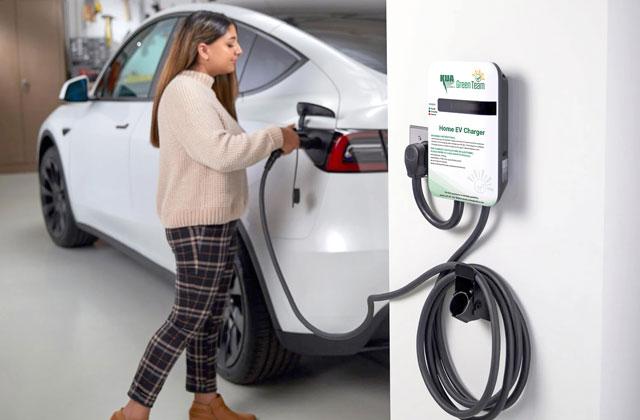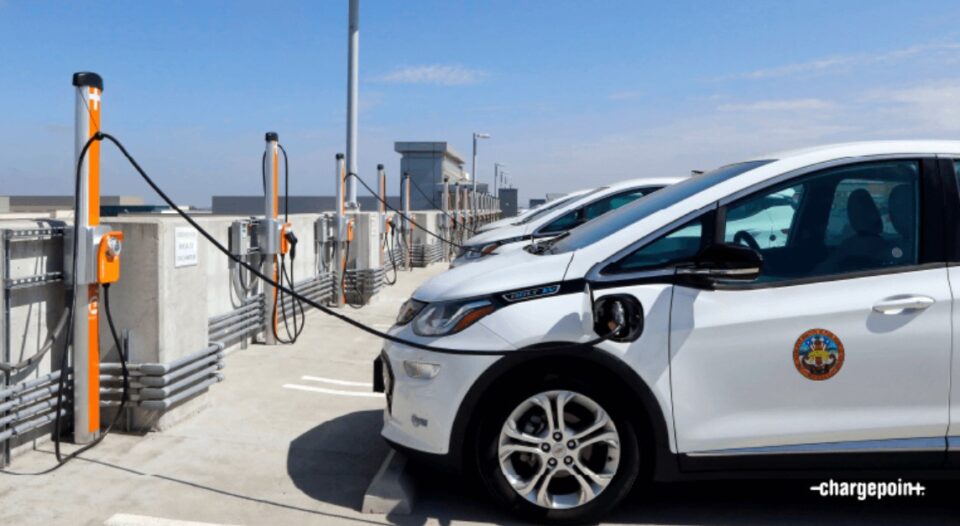New Dope in EV Charging: How the Market Is Progressing to Satisfy Demand
As the electric lorry (EV) market continues to increase, the charging facilities is undertaking significant makeovers to deal with the rising demand. The ramifications of these innovations raise crucial inquiries regarding the future of EV billing and its duty in the broader power ecosystem.
Growth of Billing Framework
The rapid growth of electrical lorry (EV) charging facilities is an essential component in promoting the extensive adoption of electric movement. As federal governments, private business, and customers significantly recognize the importance of minimizing carbon exhausts, financial investments accountable networks have actually risen. This infrastructure growth is vital to minimize variety stress and anxiety, making certain that EV customers have hassle-free accessibility to billing terminals.
Substantial advancements accountable station technology and deployment strategies have emerged. Urban locations are seeing a spreading of public billing terminals, while rural regions are gradually being integrated right into the billing network. Collaborations in between automobile producers and charging carriers are becoming more usual, helping with the establishment of comprehensive networks that boost individual experience and ease of access.
On top of that, the assimilation of sustainable energy sources into billing stations is obtaining momentum, advertising sustainability in the EV environment. This shift not just supports ecological goals but likewise aligns with the climbing demand for environment-friendly energy remedies among customers.
Ultra-Fast Charging Technologies
Ultra-fast charging modern technologies represent a substantial leap onward in the EV charging landscape, making it possible for electric automobiles to recharge in a portion of the moment compared to typical charging techniques. These innovations normally deliver power levels going beyond 150 kW, with some systems rising to 350 kW or even more, significantly lowering charging times to as little as 15-30 mins for a significant charge.
Secret making it possible for technologies consist of developments in battery chemistry, power electronic devices, and thermal monitoring systems. For example, high-capacity batteries with enhanced thermal security permit faster charging without overheating. In addition, advancements in billing infrastructure, such as liquid-cooled cords and modular billing terminals, facilitate efficient power transfer, improving the general individual experience
Significant auto manufacturers and innovation firms are actively buying ultra-fast billing networks, acknowledging the critical role they play in conquering variety stress and anxiety and speeding up the fostering of electric automobiles. As these innovations end up being a lot more extensively readily available, the EV market is anticipated to witness substantial development, making electrical wheelchair a much more appealing choice for consumers. In general, ultra-fast charging technologies are pivotal fit the future of lasting transport, leading the way for a more comprehensive and efficient charging environment.
Smart Grid Assimilation

Through demand reaction techniques, smart grid systems can adjust charging schedules based on grid problems and power rates. For example, throughout durations of high demand, charging can be delayed to off-peak hours, resulting in lower prices for customers and minimized stress on the grid. Furthermore, vehicle-to-grid (V2G) innovations make it possible for EVs to release power back into the grid, enhancing and giving secondary services grid stability.
Assimilation with eco-friendly power sources better enhances the sustainability of EV charging. By aligning billing activities with durations of high solar or wind generation, wise grids promote a greener billing infrastructure. Ultimately, clever grid integration not just supports the expanding demand for EVs but additionally contributes to a more durable and sustainable power future, positioning the sector for long-lasting success.
Battery Innovations
Among the fast advancement of electric lorries (EVs), battery advancements stand at the forefront, driving innovations in efficiency, sustainability, and performance. As the demand for EVs rises, makers and researchers are concentrating on enhancing battery Get the facts modern technologies to attend to obstacles such as range anxiousness and billing times.
Lithium-ion batteries continue to be one of the most widely utilized modern technology, her latest blog yet brand-new products and chemistries are arising to boost power thickness and long life. Solid-state batteries, for example, promise greater energy storage capacity and enhanced safety by replacing liquid electrolytes with solid ones. This shift could considerably decrease the danger of fire and enhance the life expectancy of batteries.
Moreover, improvements in battery reusing procedures are vital for sustainability. Firms are creating approaches to recuperate useful products like lithium, cobalt, and nickel from utilized batteries, promoting a circular economic situation and reducing ecological influence.

International Billing Specifications

Initiatives are underway to develop global charging requirements that promote compatibility amongst various EV models and charging stations. Organizations such as the International Electrotechnical Compensation (IEC) and the Culture of Automotive Engineers (SAE) are functioning collaboratively with automobile manufacturers and power companies to develop extensive guidelines. EV Charging news. These criteria objective to streamline the billing procedure, decrease the need for numerous adapters, and improve individual experience
Additionally, standardization can dramatically boost the growth of the billing network, as it encourages investment by making facilities development much more predictable and effective. As the EV market matures, a unified approach to charging criteria will certainly be essential for making certain that customers can bill their automobiles easily and dependably, thus supporting the more comprehensive change to lasting transportation.
Conclusion
The electric lorry billing market is going through significant transformation to resolve the rising demand for lasting transport. Improvements in charging framework, ultra-fast modern technologies, wise grid integration, and innovative battery remedies are essential in enhancing customer experience and operational effectiveness. The quest try this site of global billing standards is essential for making sure interoperability across various regions and systems. Jointly, these developments place the industry to sustain a wider fostering of electric lorries, eventually adding to a much more lasting future.
Urban locations are seeing a proliferation of public billing terminals, while country regions are slowly being incorporated right into the charging network. Additionally, advancements in billing framework, such as liquid-cooled cables and modular charging stations, assist in reliable power transfer, enhancing the overall individual experience.
Generally, ultra-fast billing modern technologies are pivotal in shaping the future of sustainable transport, leading the method for an extra considerable and efficient charging ecological community. - EV Charging news
By straightening charging tasks with durations of high solar or wind generation, smart grids promote a greener billing facilities.Initiatives are underway to establish global billing standards that facilitate compatibility among numerous EV versions and charging terminals.
Comments on “Expert Opinions and Market Insights When You Buy EV Charging news”